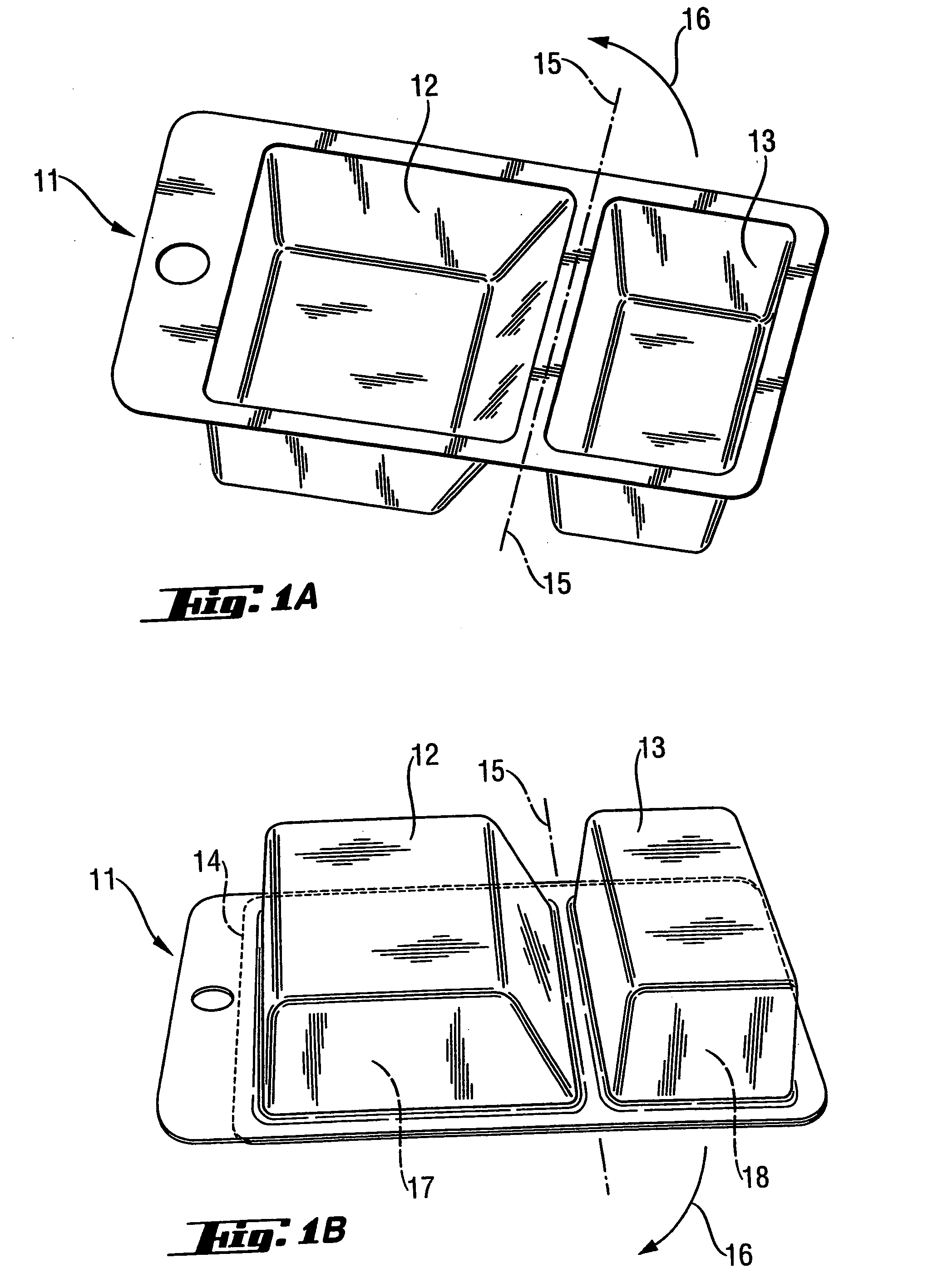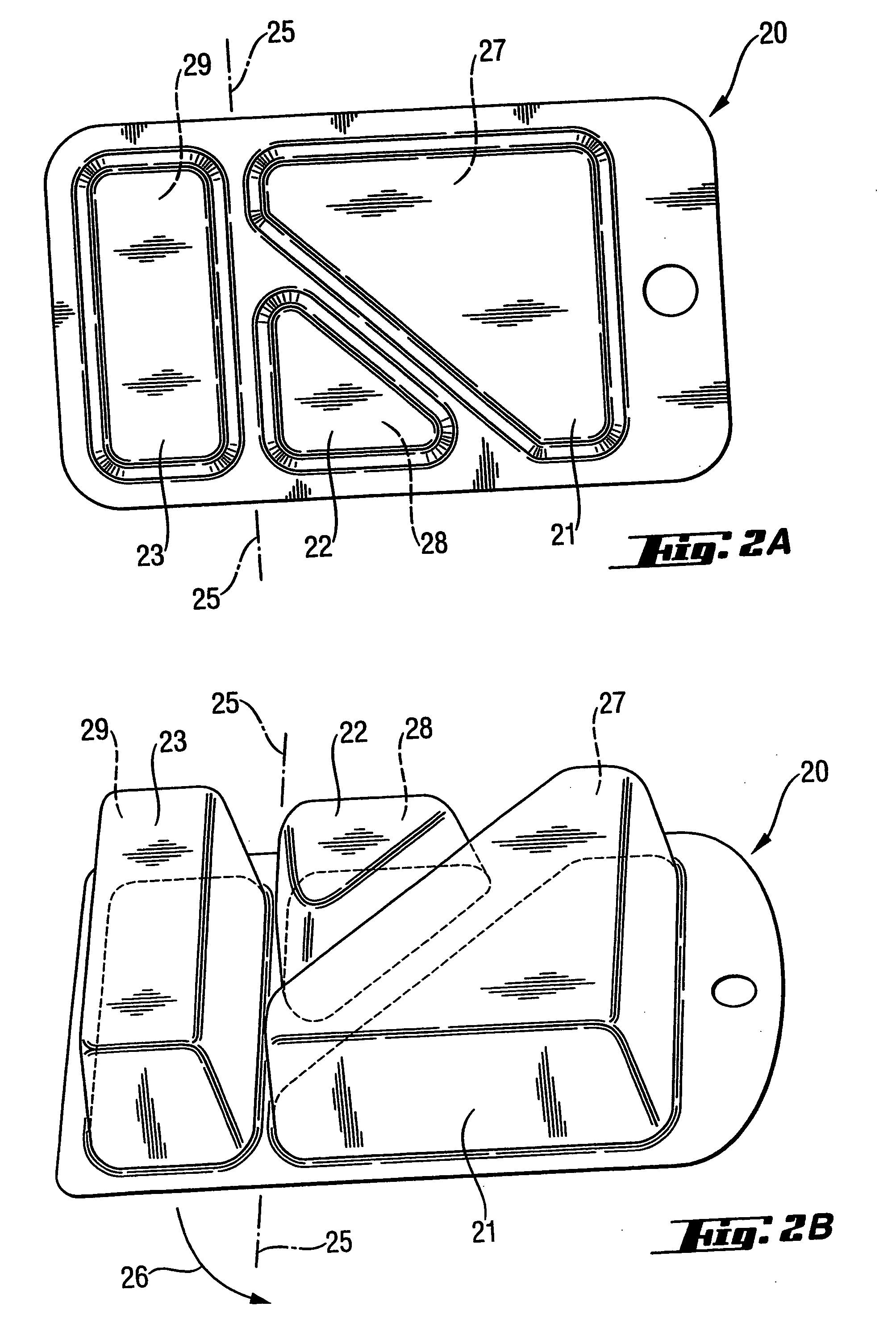Automatic machine laundering of fabrics
a technology of automatic washing machine and fabric, which is applied in the preparation of detergent mixture, other washing machines, detergent compounding agents, etc., can solve the problems of gradual dulling of dark colored fabrics, gradual residue deposition, and “dingy” appearance, so as to promote grease removal, improve the decolorization of bleachable stains, and promote the cleaning of complex soils
- Summary
- Abstract
- Description
- Claims
- Application Information
AI Technical Summary
Benefits of technology
Problems solved by technology
Method used
Image
Examples
example i
[0103] The table below shows, as Composition A, a composition particularly suitable for addition to a top loading, single rinse cycle automatic washing machine. Also shown is Composition B which is particularly suitable for addition to the final rinse cycle in a multi rinse cycle, front loading automatic washing machine. 30 grams of each composition is added to the relevant rinse cycle.
IngredientA (wt %)B (wt %)Maleic acid22.416.71,1-ethyl hydroxy diphosphonic acid (HEDP)—1.7Neodol 23-5 (nonionic surfactant)3.33.3Perfume1.31.7Waterbalancebalance
example ii
[0104] A three-compartment unit dose insert is prepared having the general configuration of that shown in FIG. 2. The insert is fashioned from 0.381 mm thick polypropylene and is made by a thermoforming process. The insert so formed is 11.0 cm long, 7.0 cm wide and 2.5 cm thick and includes the three compartments, 21, 22 and 23 shown in FIG. 2.
[0105] Approximately 55 grams of a compact aqueous heavy duty liquid (HDL) detergent product are placed in the larger wash additive compartment 21 of the FIG. 2 insert. Such an HDL comprises approximately 40% by weight of anionic and nonionic surfactants, 8% by weight of organic builders, 19% by weight of organic solvents and minor amounts of other ingredients such as borax and enzymes.
[0106] Approximately 11 grams of a liquid bleaching composition are placed in the smaller wash additive compartment 22 of the FIG. 2 insert. Such a composition comprises a 17% by weight aqueous slurry of δ-phthalimidoperoxy hexanoic acid (PAP) along with minor...
PUM
| Property | Measurement | Unit |
|---|---|---|
| temperature | aaaaa | aaaaa |
| temperature | aaaaa | aaaaa |
| temperature | aaaaa | aaaaa |
Abstract
Description
Claims
Application Information
 Login to View More
Login to View More - R&D
- Intellectual Property
- Life Sciences
- Materials
- Tech Scout
- Unparalleled Data Quality
- Higher Quality Content
- 60% Fewer Hallucinations
Browse by: Latest US Patents, China's latest patents, Technical Efficacy Thesaurus, Application Domain, Technology Topic, Popular Technical Reports.
© 2025 PatSnap. All rights reserved.Legal|Privacy policy|Modern Slavery Act Transparency Statement|Sitemap|About US| Contact US: help@patsnap.com



